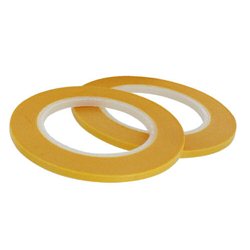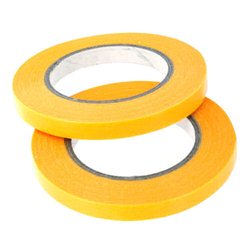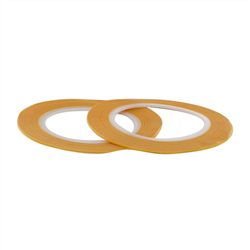Liquid Masks are latex-based liquid masking solutions, generally supplied in a small bottle. They are a viable and...
No products
Product successfully added to your shopping cart
There are 0 items in your cart. There is 1 item in your cart.
Search Tips
Christmas and New Year
We are dispatching orders every weekday apart from Christmas Day, Boxing Day and New Year's Day.
If you select next day delivery at checkout, please note deliveries are not made on public holidays or Sundays.
The shop in Sandown is open 23rd and 24th December, then closed from 25th December, reopening on 30th December.
What size masking tape should I use on my models?
Masking tape is an essential tool in scale modelling and the size you choose can significantly impact the quality and precision of your work.
Masking tape comes in various widths, ranging from as narrow as 1mm to as wide as 18mm or even larger. The size you should use primarily depends on the area you intend to mask and the level of detail required.
For intricate details or masking around small areas, such as panel lines, vents, or cockpit frames, narrower tapes like 1mm or 2mm are ideal. These thin widths allow you to precisely mask off minute sections, ensuring clean and crisp demarcation lines.
Conversely, larger surfaces, like fuselages, wings, or vehicle bodies, can benefit from wider tapes, such as 6mm or 10mm. Wider tapes cover more area with fewer strips, reducing the potential for overlapping edges and ensuring a smoother finish.
It's crucial to let previously painted areas dry thoroughly, ideally for 24 hours, before masking over them. Applying tape to freshly painted surfaces can potentially lift or damage the underlying paint.
Some masking tapes are specifically designed for model making, featuring a lower tack (stickiness) level. These tapes are less likely to remove or damage existing paint layers when removed, making them a safer choice for masking over previously painted areas.
If you're using regular household masking tape, which tends to be stickier, a handy trick is to cut the tape to the desired length and place it on your trousers or another fabric surface. Then, peel it off. This process slightly reduces the tape's adhesive strength, minimising the risk of paint lift or damage when removing it from your model.
When masking complex curves or irregular shapes, it's often helpful to cut the tape into shorter lengths and overlap the pieces, rather than trying to stretch a single long piece. This technique allows the tape to conform to the contours more easily, resulting in cleaner, sharper lines.
Remember, masking tape is a tool, and like any tool, practice and experimentation are key to mastering its use. Try different widths and techniques on scrap pieces or test models to find the methods that work best for your modelling style and the specific project at hand.
Click here to receive the tips weekly in your mailbox. You can unsubscribe at any time.










